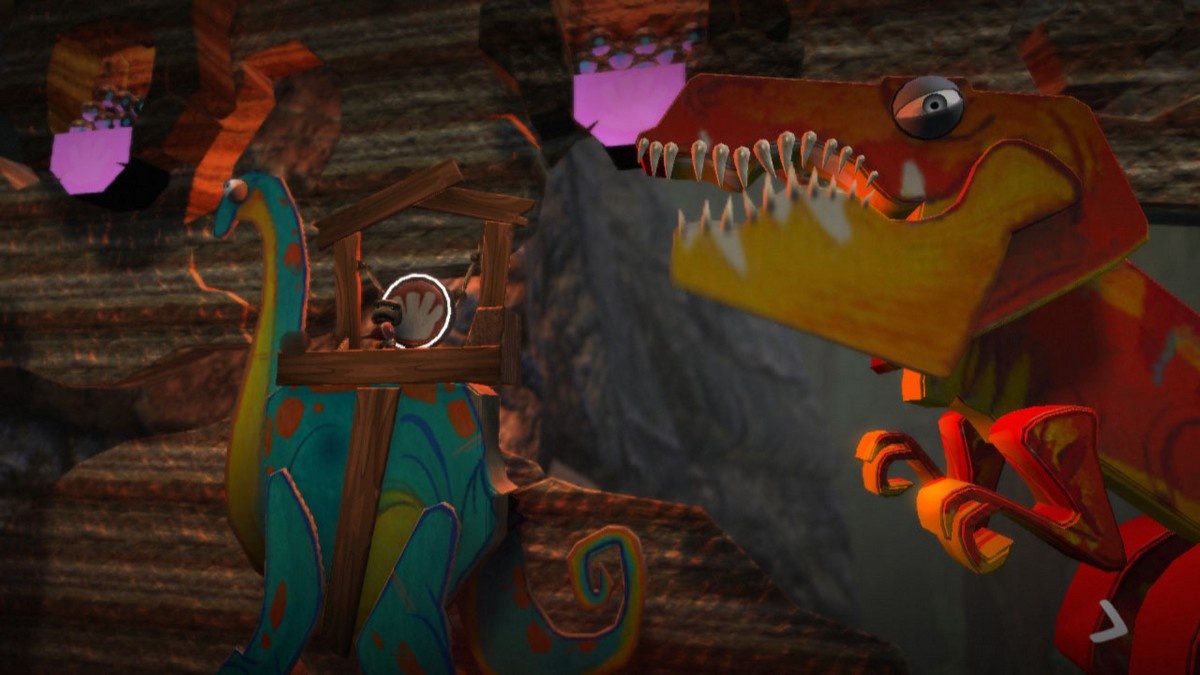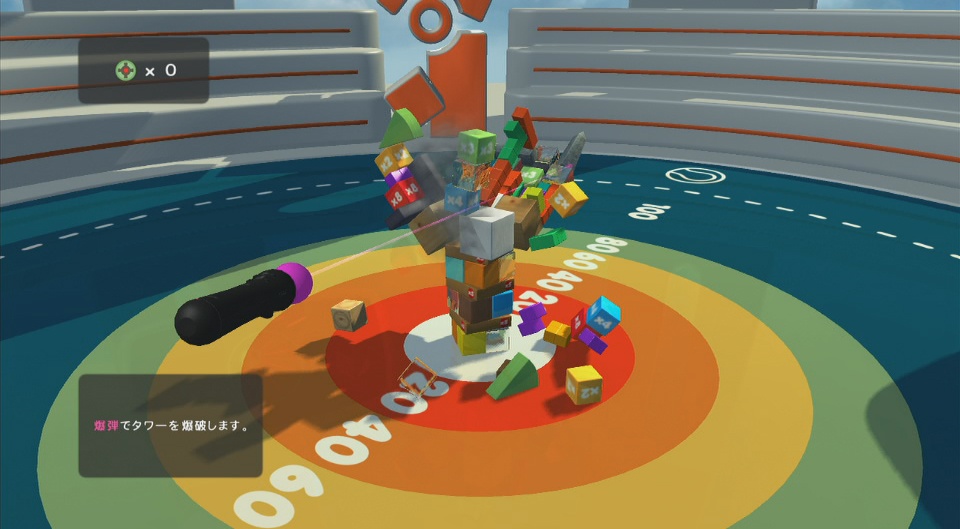TGS PlayStation Move Roundup: LBP2, Echochrome II, Beat Sketcher, and Tumble
We take a motion-controlled tour through some of Sony's featured PlayStation Move demos.
Sony has staked out some serious territory at Tokyo Game Show 2010. One of the most prominent features of Sony's area is the two-story structure that houses close to 20 rooms. Each of these rooms is a demo area for a specific PlayStation Move-compatible game, and they are all missing one wall, which makes them look like little cubbyholes designed to show off the Move in action. We poked our heads into a few of these rooms and played an assortment of games. We carefully stacked blocks in Tumble, traced a tyrannosaurus along with the music in Beat Sketcher, used shadows to solve puzzles in Echochrome II, and guided Sackgirl through a perilous digestive system in Little Big Planet 2. Read on to find out just how the PlayStation Move handled these strange and diverse tasks.
Another Crab's Treasure Is A Soulslike 3D Platformer | GameSpot Review Stellar Blade Review Nintendo 64 – April 2024 Game Updates – Nintendo Switch Online Super Monkey Ball Banana Rumble - Official Multiplayer Features Trailer PUBG | Erangel Classic Returns Gori: Cuddly Carnage | Meow Launch Date Announcement Trailer Genshin Impact - "Arlecchino: Afterglow of Calamity" | Collected Miscellany Marvel Rivals - Official Loki Character Reveal Trailer | The King of Yggsgard Fortnite Festival - Official Billie Eilish Cinematic Season 3 Trailer Remnant 2 - The Forgotten Kingdom | DLC Launch Trailer Stellar Blade - Official "The Journey: Part 2" Behind The Scenes Trailer | PS5 Games Dead by Daylight | Tome 19: Splendor | Reveal Trailer
Please enter your date of birth to view this video
By clicking 'enter', you agree to GameSpot's
Terms of Use and Privacy Policy
Little Big Planet 2 is the sequel to Media Molecule's critically acclaimed platformer. The levels we played were bursting with the creativity and visual charm that the franchise is known for, as well as some new elements that were specifically designed with the Move in mind. During our demo, our host used the DualShock 3 controller to guide Sackgirl through a prehistoric world, and we wielded the Move to help her along. By pointing at the bright-pink elements onscreen and holding the trigger, we manipulated the environment in a number of ways. We opened a dinosaur skull to allow her to pass and then used it to flip her up to the next platform. We used a tree branch to lure an apatosaurus down so Sackgirl could climb on its head, and we carried a protective dome over her head as she passed near a volcano. The simple motions occasionally required some dexterity, but mostly they seemed suited for including younger players or those otherwise disinclined to enjoy playing with the analog sticks.
Though Little Big Planet 2 is certainly a more widely recognized game, the one that piqued our interest was Echochrome II. This sequel once again puts the fate of a human figure in your hands without actually letting you control the figure. Instead, you must shape the level to allow the figure to safely navigate through to the exit. Each level contains a spotlight shining on an assortment of shapes that are suspended in midair. The spotlight causes the shapes to cast shadows on a back wall, and because the figure is actually a silhouette, the shadows are the platforms that it walks on. By using the Move controller to change the angle of the spotlight, you can connect separate shadows to create continuous platforms for the figure to traverse.

The figure climbs and descends stairs of varying heights and turns around when it reaches the end of a platform. It can bounce high into the air off of ball shadows, fall through circular holes in specific shadows, and teleport between the shadows of door frames. These environmental elements add some variety and hint at further complexity in later puzzles. Finally, you must also create the exit out of shadows by aligning a ball shadow and a rectangle shadow to form an arched doorway. This can serve as a visual cue as to when you are getting close to a solution, and some puzzles even resolve into solid images (like smiley faces and snakes) when you get them right. Echochrome II's environments seemed packed with potential for more complex situations, and the simple Move controls were intuitive and fun to use.
Beat Sketcher continues the theme of simple Move controls, though the creative focus of the game means there is a lot more to do. On a basic level, Beat Sketcher is a drawing studio that allows you to paint images on to the canvas of whatever room you are standing in. This default background comes courtesy of the PlayStation Eye camera, but you are free to alter it in whatever way you wish. All the familiar paint studio tools are here (brushes of varying size, shape-making tools, spray paint, stamps, erasers, and so on) as are a wide variety of different colors.
After doodling around for a bit, we took on the challenge of tracing predetermined images along with a musical track. First, a guideline is automatically drawn onscreen, accompanied by a musical riff. Then, you must fill in the guideline, following a target reticle that moves in time with the same musical riff played during the drawing of the guideline. The idea is to use the music to match the speed of your Move motion to that of the target reticle, but it's easier said than done. Our dolphin turned out a bit mushy, and the tyrannosaurus rex didn't fare much better. This part of Beat Sketcher definitely offered a bit of a challenge, but seeing our drawing come together was still pretty satisfying.

The last game we checked out was Tumble, a downloadable game that was released on the PlayStation Network in the US this week. Some of the challenges in Tumble involve stacking blocks of varying size, shape, and material as high as you can. Depending on how high you go, you earn a bronze, silver, or gold medal for your efforts. There are obstacles to contend with, however, such as platforms that move back and forth along a laser rail, obstructing you from just building straight up. With some careful stacking and proper balance you can circumvent these objects, and the Move controls were precise enough to allow us to be as gentle as we could manage. Other challenges were less constructive, focusing instead on destroying a tower for maximum points. By placing a few remote-detonated mines, you try to cause the blocks to scatter outward as far as you can. You earn points based on how far they go, including bonuses for special multiplier blocks.
While Echochrome II was the highlight of our Move demos, they all showcased the precision of Sony's new hardware. Everything felt intuitive, whether it was manipulating intestinal walls in LBP2 or choosing a bright-purple paintbrush in Beat Sketcher. Each game also showed a different application of the motion controls, and we're looking forward to seeing the new ways that developers will implement this hardware in the future.
Got a news tip or want to contact us directly? Email news@gamespot.com
Join the conversation